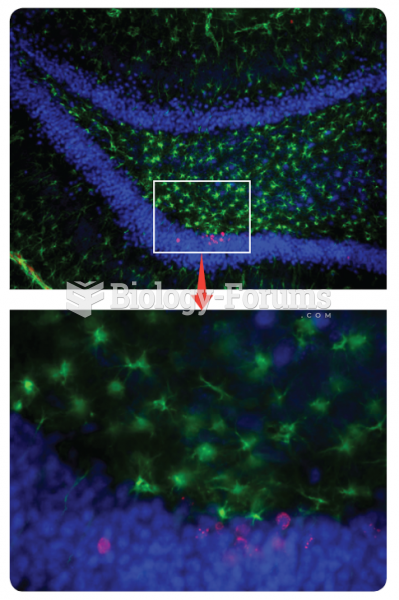|
|
|
Prostaglandins were first isolated from human semen in Sweden in the 1930s. They were so named because the researcher thought that they came from the prostate gland. In fact, prostaglandins exist and are synthesized in almost every cell of the body.
The term bacteria was devised in the 19th century by German biologist Ferdinand Cohn. He based it on the Greek word "bakterion" meaning a small rod or staff. Cohn is considered to be the father of modern bacteriology.
Inotropic therapy does not have a role in the treatment of most heart failure patients. These drugs can make patients feel and function better but usually do not lengthen the predicted length of their lives.
More than one-third of adult Americans are obese. Diseases that kill the largest number of people annually, such as heart disease, cancer, diabetes, stroke, and hypertension, can be attributed to diet.
As many as 20% of Americans have been infected by the fungus known as Histoplasmosis. While most people are asymptomatic or only have slight symptoms, infection can progress to a rapid and potentially fatal superinfection.
 This CNG pump is capable of supplying compressed natural gas at either 3,000 PSI or 3,600 PSI. The ...
This CNG pump is capable of supplying compressed natural gas at either 3,000 PSI or 3,600 PSI. The ...
 Adult neurogenesis. The top panel shows new cells in the dentate gyrus of the hippocampus—the cell ...
Adult neurogenesis. The top panel shows new cells in the dentate gyrus of the hippocampus—the cell ...





